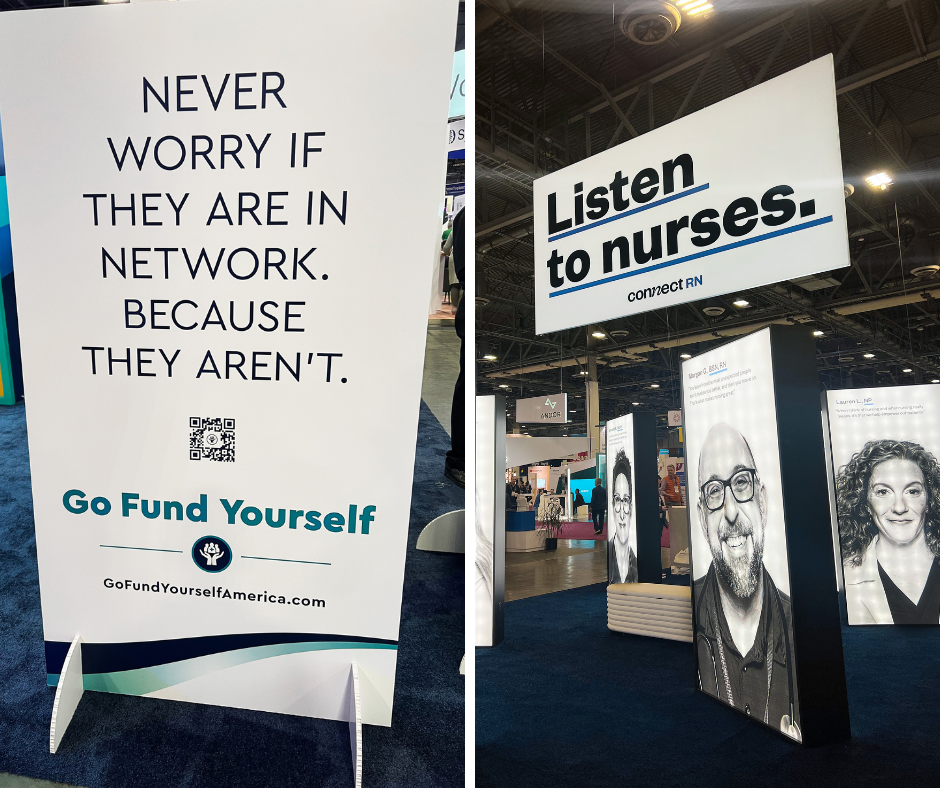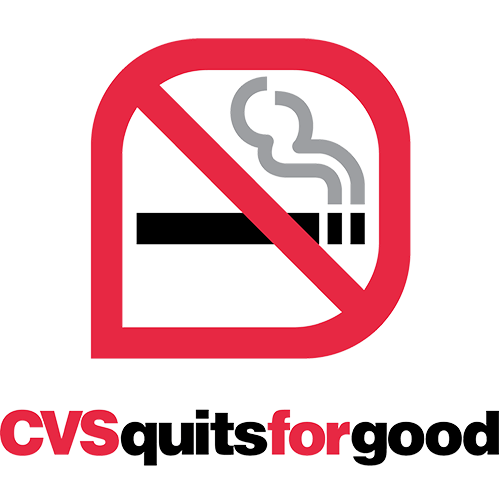How to stand out in a sea of ‘sameness’ in healthcare
The healthcare industry is built on innovation. There’s no shortage of creativity when it comes to novel treatments, therapies and technologies. But, for an industry powered by people-centric products, it can be challenging to articulate real human benefits without getting caught in a cyclone of healthcare buzzwords. So, how do you break through the noise in an oversaturated space to bring your brand messages to life in fresh new ways?
We recently sat down with connectRN, the leading nurse community, and Nomi Health, a direct healthcare company, to talk about our shared philosophies on tapping into the human side of healthcare in simple, yet bold ways. Their booth design, messaging and overall creative caught our attention at a recent healthcare conference and we wanted to hear more.
Below, you’ll learn about three effective methods for approaching creative in healthcare to stand out in a sea of sameness.
To be disruptive, be unexpected, but stay human
Discovering the human truths that we all experience is a powerful way to evoke empathy without relying heavily on industry jargon. Since many industry competitors lean on the industry status quo, the best way to create something memorable is to take an unexpected approach to common truths.
Nomi Health executed a disruptive, yet elevated, marketing campaign that boldly declared, “Go Fund Yourself.” The stark campaign message that closely mimics familiar profanity captivated audiences and sparked their interest.
“I think it's really hard to get out of the box of healthcare thinking once you're in it because it’s so inherently complicated,” explains Lanna Tokuhiro, director of brand strategy & insights at Nomi Health. “For us, internally and externally as a company, we have a strong belief that healthcare needs a rebuild, not a renovation. We’re very adamant about how we’re designing a better system and how we’re going to approach it differently. So we had to be willing to also allow our advertising to show up differently.”
Healthcare is complex and the creative can get clunky, unrelatable or unmemorable if balanced on buzzwords. Like Nomi, to bring your message to life, healthcare companies need to find the universal truths we all experience to bridge the gap between human insight and innovation.
To pique curiosity, put people first and products second
Capture your audience’s attention by helping them look at your product through the eyes of the people it directly benefits. Features are important, but they are fundamental to the point of purchase and will be sought out by the buyer, no matter what. Humans are perpetually curious about what impacts our peers, so a people-first approach will create organic interest.
connectRN featured their nurses and their stories front and center, instead of their platform that helps nurses connect with new job opportunities. By focusing on real nurses and their experiences, audiences felt deep connections that motivated a high volume of interest. When chatting with Nick Iuliano, vice-president, head of content, at connectRN, we asked what the motivation was behind their recent nurse-centric campaign.
“Regardless of whatever tech or product you’re trying to sell, if you don’t establish a human-to-human connection, it's going to be a lot harder for people to see the value in your offer,” he explains. “By putting nurses front and center, we were able to draw people into our booth organically and have more meaningful conversations.”
To tell the whole story effectively, simplify complex concepts
Keep language simple and prioritize where, when and how you’ll execute different messages across different platforms. But, remember not every piece of content has to tell the whole story.
Hillrom, a healthcare company, partnered with (add)ventures, to help shift audience perceptions of them as a hospital bed maker to help position them as the global health tech innovator that they’d become. Because decision makers for healthcare organizations are often made up of committee members from different departments, key stakeholders often had different priorities.
A deeply strategic content plan for our digital campaign was critical. Paying special attention to the unique interests of their multi-tiered audience helped prioritize when and how to deploy the most impactful, yet simple messages on different platforms. To do this, and ensure the totality of the creative was cohesive, the (add)venturists project team defined bold value levers—resilient, intuitive and essential—that could be dialed up or down depending on the audience, product and asset.
For C-suite healthcare executives, we leaned into concise messages that inspired safer care, better outcomes and staff support. It was important to position emerging technologies as tools, not replacements for the people providing patient care. Caregiver-specific creative showcased the suite of connected care products as allies that could ultimately give caregivers more time to do what they do best: care for patients.
Each communication should fit into the larger story, but be able to stand on its own in a concise and meaningful way. If you try to say everything all at once, you risk drowning out your messages and overwhelming the consumer. Crafting simple, yet direct messages will enhance the impact of the digital surround-sound of a campaign without alienating people with different organizational priorities.



